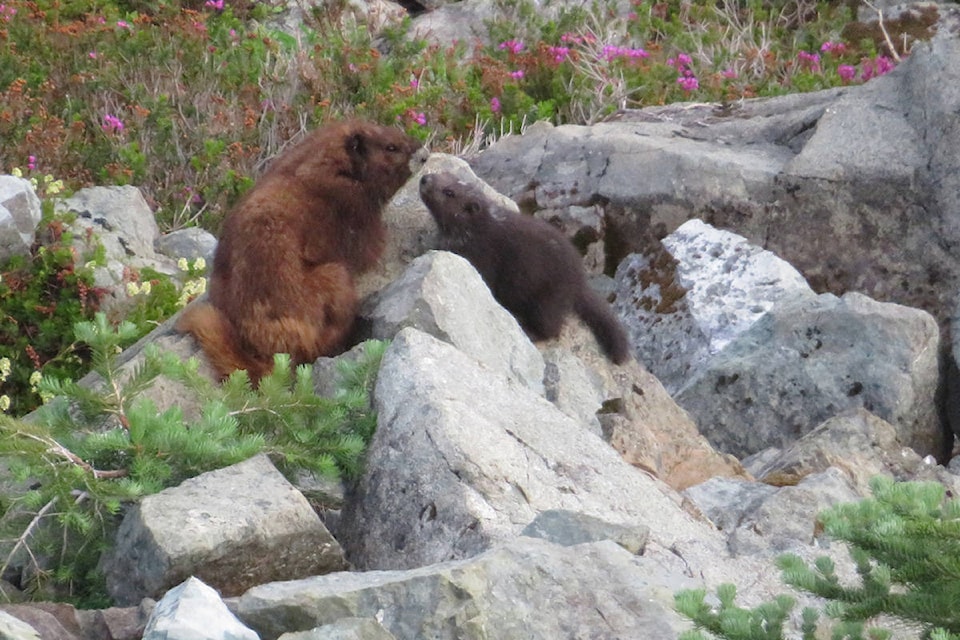While a marmot recently gave birth to six pups, a conservationist says the endangered species isn’t out of the woods yet.
The Vancouver Island marmot is listed as endangered on the Government of Canada’s species at risk public registry, and while the discovery last month of Molly the marmot and her six newborns in Strathcona Park was good news to Adam Taylor, Marmot Recovery Foundation executive director, he said it isn’t time to celebrate yet.
There are currently an estimated 150 to 200 marmots in the wild, Taylor said, which is in stark contrast to 2004, when the first marmots were released into the wild. Back then, there were an estimated 22 marmots in the wild, according to Taylor.
“It’s certainly recovering,” said Taylor about the population. “Obviously 150 individuals or 200 individuals, that’s not a sustainable population yet, but they’re definitely coming back and it has been largely a success story. A species that was within months to a year of going extinct, it’s not teetering on that edge of extinction any more, but without continued support right now, they’d still get back there.”
RELATED: Marmots released on Mount Washington
Taylor said the animals’ annual mortality exceeds their annual reproduction, unless there is outside support.
“In an ideal world, we’d see between 50, but probably closer to 100 to 200 pups a year being born in the wild,” Taylor said. “So right now, we’re creeping up on that 50 number. Last year, we saw 42, so far this year we’ve seen about 36. We’re likely to see a few more as the season progresses. But we’d certainly like to see that number increase significantly before we start to consider the population stable.”
Among the reasons Taylor speculates for marmot decline are landscape changes – roads have made it easier for predators to get into higher elevations.
Marmots are known to reside in the Nanaimo Lakes region near Nanaimo, B.C., but Taylor said they are not in range of a wildfire currently affecting that area.
He credits TimberWest and Island Timberlands ror assisting in the population increase – numerous marmot colonies are on their land – as they allow access to lands and provide funding.
reporter@nanaimobulletin.com
Like us on Facebook and follow Karl on Twitter and Instagram
